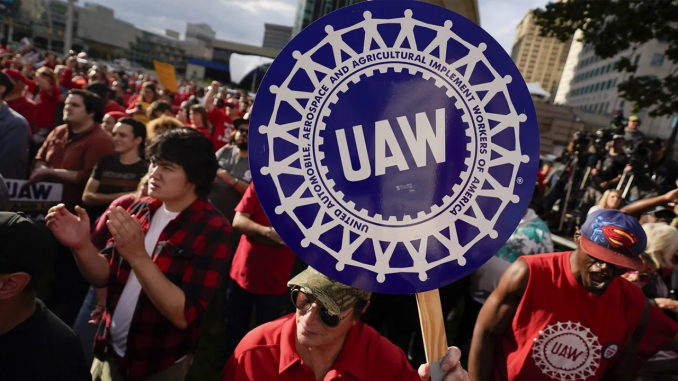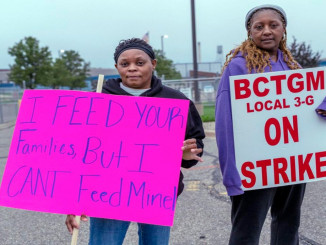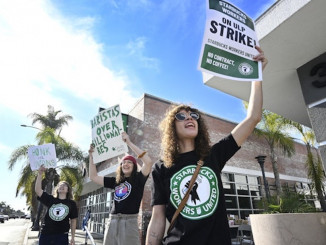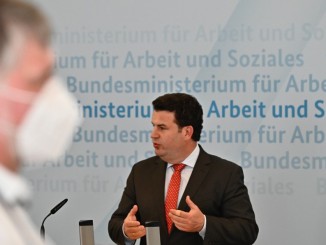
During September and October, the UAW took 50,000 of its members who work for the Big Three – Ford, General Motors, and Stellantis (which owns Chrysler and Jeep) out on strike. The contracts the UAW negotiated include a 25% wage increase and cost of living payments to counter inflation. Most importantly, the new contract no longer permits the companies to pay production workers hired after 2008 substantially less than workers doing the same work who were hired before 2008. Now everyone with at least three years of seniority will get the same pay, which the union officials calculate will be $43/hour when the contract expires in 2028.
The gains in this contract and the union’s decision to strike all of the Big Three simultaneously is seen by many auto workers as a sign that the UAW is at last ready to lead a fight after 45 years of retreat. For decades, the UAW gave concession after concession to the Big Three at the expense of its members. Taking advantage of concessions that held down wages while inflation, car prices, and CEO salaries soared, the Big Three amassed nearly three quarters of a trillion dollars in profits during the last four years. Many workers were cheered when the newly elected UAW President, Shawn Fain, used the media to expose and attack how companies were greedily exploiting auto workers.
Coming off a strike that many UAW autoworkers see as at least a modest victory, UAW autoworkers and union officials now face an even greater challenge. Only about one half of the 300,000 workers making automobiles and trucks are members of their union. Non-union companies like Honda, Mercedes, Hyundai, and Tesla employ the other 150,000 auto workers. These companies now produce about half of the motor vehicles sold in the United States and they generally pay less than UAW members make. So long as half the auto industry is non-union and paid less, it will be very difficult for the UAW members at the Big Three to improve their wages, benefits, and working conditions since the very competitive non-union companies don’t have to match the union standards at companies and plants where there is a union.
On the other hand, if autoworkers in the non-union plants wage successful fights to organize, they will not only be in a position to improve their own standard of living and working conditions, but by joining with the UAW’s members, they will make it possible for ALL autoworkers to fight for gains which would be impossible if even a small part of the auto workforce remains unorganized. The UAW says that thousands of workers at the non-union plants have signed up to join in the last month.
The non-union companies are prepared for a big fight to stop unionization. Even though it is against the law, they are disciplining workers for wearing UAW stickers and distributing UAW leaflets. They have also announced wage increases in an effort to persuade the workers they don’t need a union. But everyone knows the companies are only promising increases because of the gains the UAW workers won.
UAW officials are helping victimized workers file charges with the National Labor Relations Board. Still, the UAW leaders know that even when the NLRB sides with the workers, it has limited ability to stop the bosses from violating workers’ rights. The law isn’t set up to make companies like Toyota or Tesla recognize a union. Companies like Toyota and Tesla will only make meaningful concessions on wages and working conditions when the workers themselves are united and strong enough to close down production. If the UAW prioritizes making appeals to the NLRB and friendly politicians over supporting militant shop floor-based organizing, then the momentum coming off the strike with the Big Three will soon be lost. And with it will go the hope of an immediate breakthrough in the non-union sector of the auto industry.




